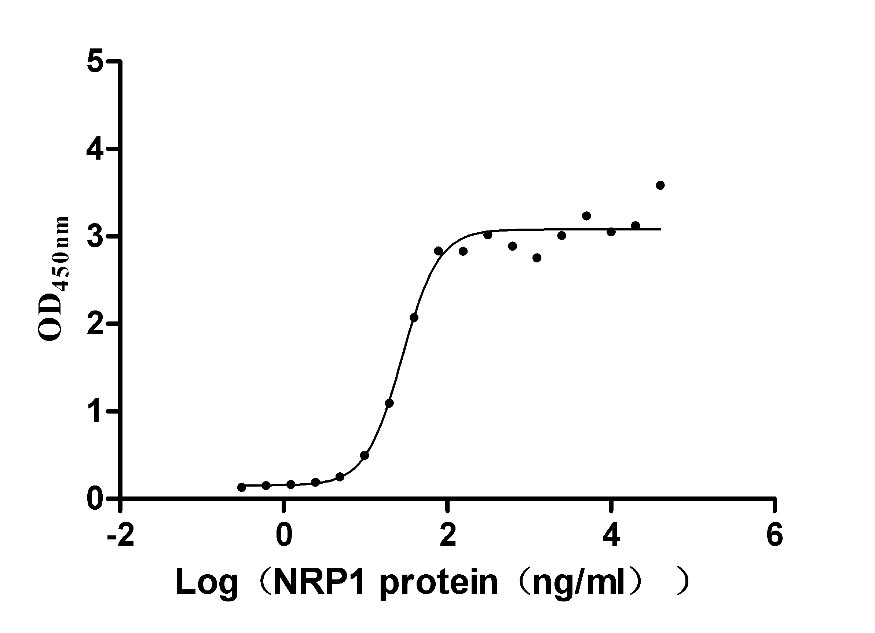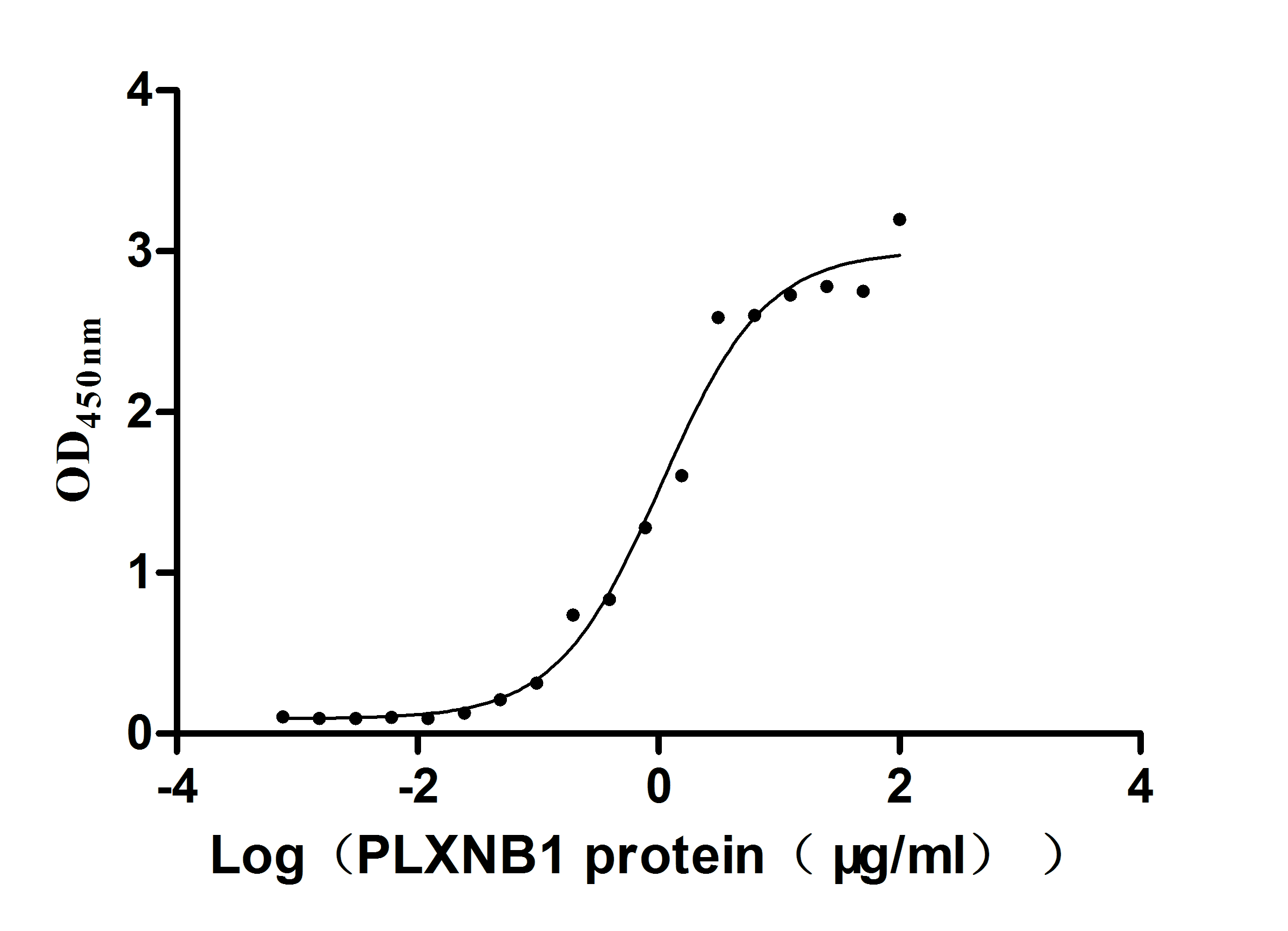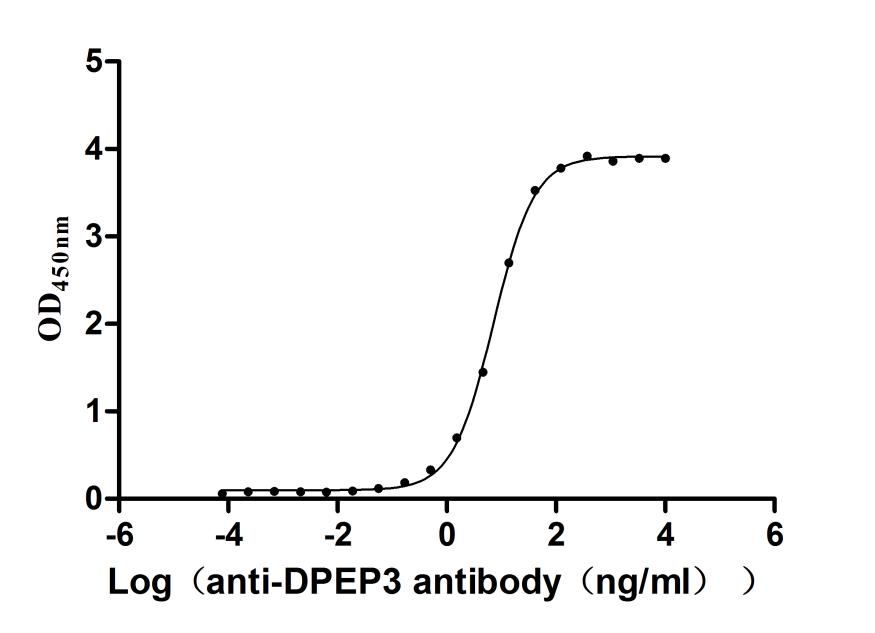Recombinant Mouse Cholecystokinin receptor type A (Cckar), partial
-
货号:CSB-YP004772MO1
-
规格:
-
来源:Yeast
-
其他:
-
货号:CSB-EP004772MO1
-
规格:
-
来源:E.coli
-
其他:
-
货号:CSB-EP004772MO1-B
-
规格:
-
来源:E.coli
-
共轭:Avi-tag Biotinylated
E. coli biotin ligase (BirA) is highly specific in covalently attaching biotin to the 15 amino acid AviTag peptide. This recombinant protein was biotinylated in vivo by AviTag-BirA technology, which method is BriA catalyzes amide linkage between the biotin and the specific lysine of the AviTag.
-
其他:
-
货号:CSB-BP004772MO1
-
规格:
-
来源:Baculovirus
-
其他:
-
货号:CSB-MP004772MO1
-
规格:
-
来源:Mammalian cell
-
其他:
产品详情
-
纯度:>85% (SDS-PAGE)
-
基因名:
-
Uniprot No.:
-
别名:Cckar; Cholecystokinin receptor type A; CCK-A receptor; CCK-AR; Cholecystokinin-1 receptor; CCK1-R
-
种属:Mus musculus (Mouse)
-
蛋白长度:Partial
-
蛋白标签:Tag type will be determined during the manufacturing process.
The tag type will be determined during production process. If you have specified tag type, please tell us and we will develop the specified tag preferentially. -
产品提供形式:Lyophilized powder
Note: We will preferentially ship the format that we have in stock, however, if you have any special requirement for the format, please remark your requirement when placing the order, we will prepare according to your demand. -
复溶:We recommend that this vial be briefly centrifuged prior to opening to bring the contents to the bottom. Please reconstitute protein in deionized sterile water to a concentration of 0.1-1.0 mg/mL.We recommend to add 5-50% of glycerol (final concentration) and aliquot for long-term storage at -20℃/-80℃. Our default final concentration of glycerol is 50%. Customers could use it as reference.
-
储存条件:Store at -20°C/-80°C upon receipt, aliquoting is necessary for mutiple use. Avoid repeated freeze-thaw cycles.
-
保质期:The shelf life is related to many factors, storage state, buffer ingredients, storage temperature and the stability of the protein itself.
Generally, the shelf life of liquid form is 6 months at -20°C/-80°C. The shelf life of lyophilized form is 12 months at -20°C/-80°C. -
货期:Delivery time may differ from different purchasing way or location, please kindly consult your local distributors for specific delivery time.Note: All of our proteins are default shipped with normal blue ice packs, if you request to ship with dry ice, please communicate with us in advance and extra fees will be charged.
-
注意事项:Repeated freezing and thawing is not recommended. Store working aliquots at 4°C for up to one week.
-
Datasheet :Please contact us to get it.
相关产品
靶点详情
-
功能:Receptor for cholecystokinin. Mediates pancreatic growth and enzyme secretion, smooth muscle contraction of the gall bladder and stomach. Has a 1000-fold higher affinity for CCK rather than for gastrin. It modulates feeding and dopamine-induced behavior in the central and peripheral nervous system. This receptor mediates its action by association with G proteins that activate a phosphatidylinositol-calcium second messenger system.
-
基因功能参考文献:
- The studies establish chronic pancreatitis as an IL-33-dependent inflammation resulting from synergistic interactions between the NOD1 and CCKR signaling pathways. PMID: 26813347
- There is functional synergy between cholecystokinin receptors CCKAR and CCKBR in mammalian brain development. PMID: 25875176
- mice lacking CCK receptors exhibited a functional shift from the gastrin-CCK pathways to the neuronal pathway in control of the ECL cells and eventually the acid secretion PMID: 25160855
- cellular and subcellular localization of cholecystokinin (CCK)-1 receptors in the pancreas, gallbladder, and stomach PMID: 25249350
- CCK-8S increases [Ca(2+)]i in gastric antral interstitial cells of Cajal via the CCK(1) receptor PMID: 23326123
- CCK1 receptor activation does not have a greater effect combination with upregulated leptin signalling in high-fat-fed mice PMID: 23462797
- Suggest role for ependymal CCK-1 receptors in infant satiety-controlling mechanisms. PMID: 23266937
- CCK-1 and -2 receptors may function synergistically in single PaPo neurons and deletion of CCK-1 receptors may facilitate CCK-2 receptor signaling. PMID: 23038256
- This study demonistrated that cholecystokinin-1 receptor relate to glucose homeostasis. PMID: 21871472
- data show that hyperphagia in CCKR/ mice ingesting HF diet is reversed by blockade of the ghrelin receptor. PMID: 21277881
- activation of neurons in the nucleus of the solitary tract following administration of T2R agonists to the GI tract involves CCK(1) and Y(2) receptors located on vagal afferent terminals in the gut wall [CCK1R] PMID: 18003792
- CCK-A receptor is important for pancreatic exocrine secretion but not essential for maintaining glucose concentration and pancreatic growth in mice PMID: 11893936
- Anxiety-related behaviors in cholecystokinin-A, B, and AB receptor gene knockout mice in the plus-maze. PMID: 12459512
- Gallstone formation was enhanced in CCK-AR gene knockout mice. PMID: 12572876
- Deteriorated gallbladder contraction due to a lack of CCK-AR favored gallstone formation after the middle age of life. PMID: 14627338
- Differential roles for cholecystokinin a receptors in energy balance in rats and mice. PMID: 15123537
- Mice without CCK-AR showed larger hysteresis than mice with CCK-AR. PMID: 15178543
- CCKAR is involved in CCK-8S-induced depolarization of orexin neurons. PMID: 16093397
- MEKK1 probably activates a transcriptional partner of c-Jun whose activity is maintained or increased in the presence of the rat cholecystokinin 1 receptor but repressed in the presence of the mouse cholecystokinin 1 receptor. PMID: 16491099
- CCK-AR(-/-)BR(-/-) mice showed lower food intake as well as lower response to exogenous ghrelin, and a lower plasma ghrelin level after fasting, though which receptor is more important is unknown. PMID: 17134539
- Role for apo A-IV and CCK(1)R in PYY(3-36)-induced activation of vagal afferent pathway and inhibition of gastric emptying, but this is likely not pathway mediating effects of PYY(3-36) on food intake. PMID: 17641001
- CCK-AR is an ERalpha downstream gene in the pituitary. CCK-AR may play role in the estrogen sensitization of the pituitary response to GnRH. PMID: 18000302
- These results suggest that the CCK(1)R is involved in regulating caloric intake on a meal to meal basis, but that other factors are responsible for regulation of daily food intake. PMID: 18023701
- data indicate a novel function of CCK-A receptors in the nonimage-forming photoreception presumably via amacrine cell-mediated signal transduction pathways. PMID: 18073333
- Mice lacking CCK1Rs have fewer proliferating cells and neuroblasts than normal and a shortage of interneurons in the OB. PMID: 18305161
- CCK-2R is necessary to respond to carbachol as well as to produce the maximal acid secretion, while the role of CCK-1R in acid secretion is less important PMID: 19340558
显示更多
收起更多
-
亚细胞定位:Cell membrane; Multi-pass membrane protein.
-
蛋白家族:G-protein coupled receptor 1 family
-
数据库链接:
KEGG: mmu:12425
STRING: 10090.ENSMUSP00000031093
UniGene: Mm.3521
Most popular with customers
-
Recombinant Human CD48 antigen (CD48) (Active)
Express system: Mammalian cell
Species: Homo sapiens (Human)
-
Recombinant Human Tumor necrosis factor receptor superfamily member 18 (TNFRSF18), partial (Active)
Express system: Mammalian cell
Species: Homo sapiens (Human)
-
Recombinant Human Pro-neuregulin-1, membrane-bound isoform (NRG1), partial (Active)
Express system: Mammalian cell
Species: Homo sapiens (Human)
-
Recombinant Human Neuropilin-1 (NRP1) (Active)
Express system: Mammalian cell
Species: Homo sapiens (Human)
-
Recombinant Human Plexin-B1 (PLXNB1), partial (Active)
Express system: Mammalian cell
Species: Homo sapiens (Human)
-
Recombinant Rat Microtubule-associated protein tau (Mapt) (Active)
Express system: Mammalian cell
Species: Rattus norvegicus (Rat)
-
Recombinant Mouse Cytotoxic and regulatory T-cell molecule (Crtam), partial (Active)
Express system: Mammalian cell
Species: Mus musculus (Mouse)
-
Recombinant Human Dipeptidase 3(DPEP3), partial (Active)
Express system: Mammalian cell
Species: Homo sapiens (Human)


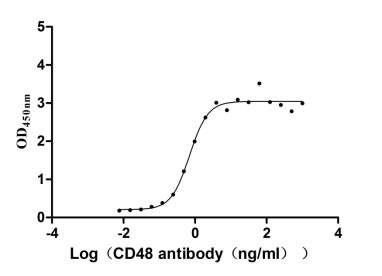
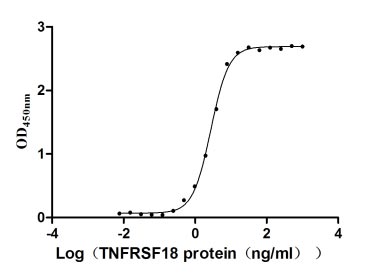
-AC1.jpg)
